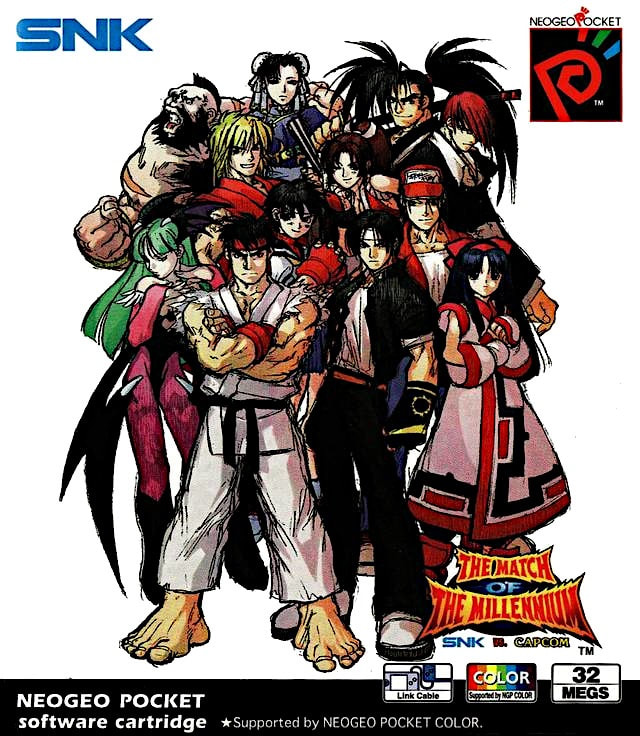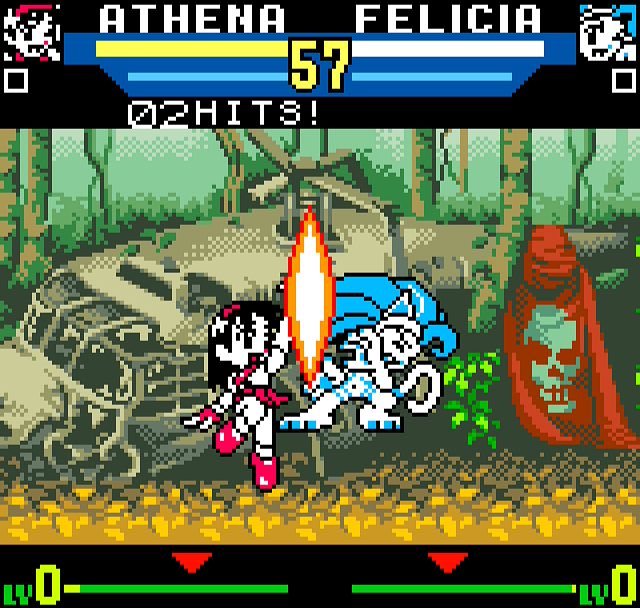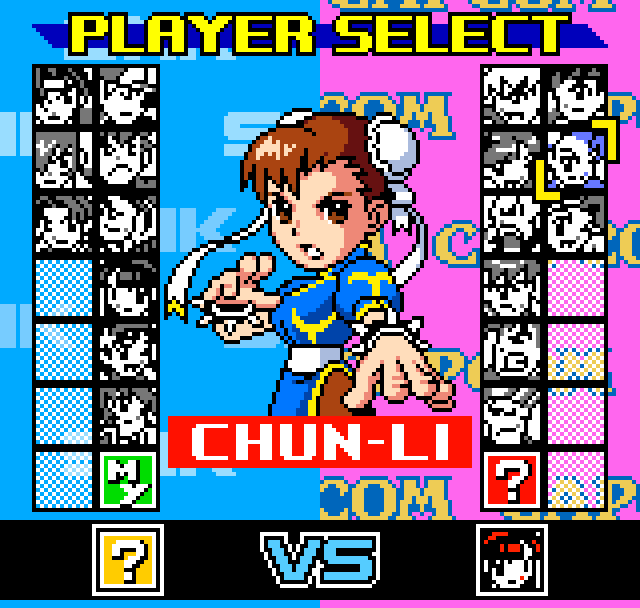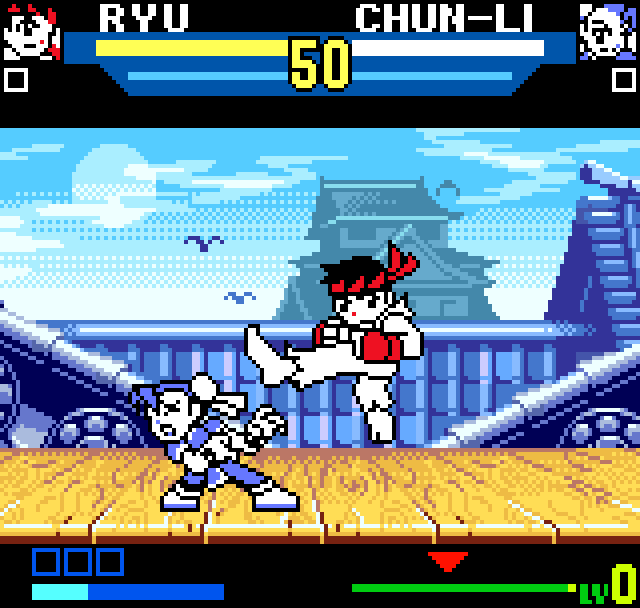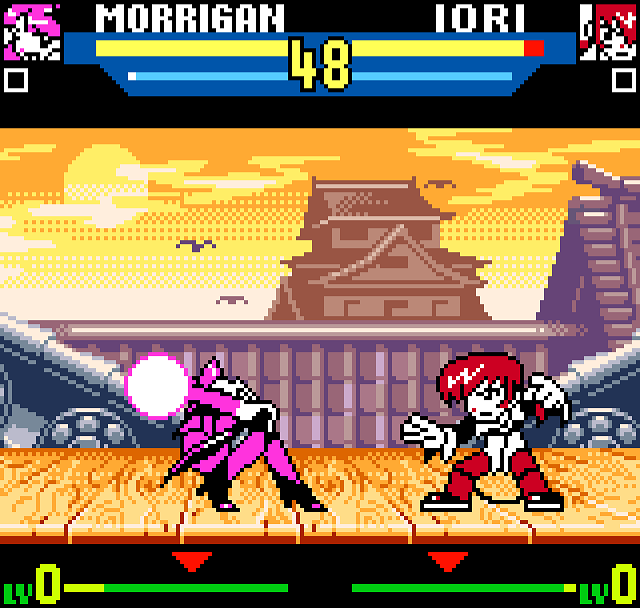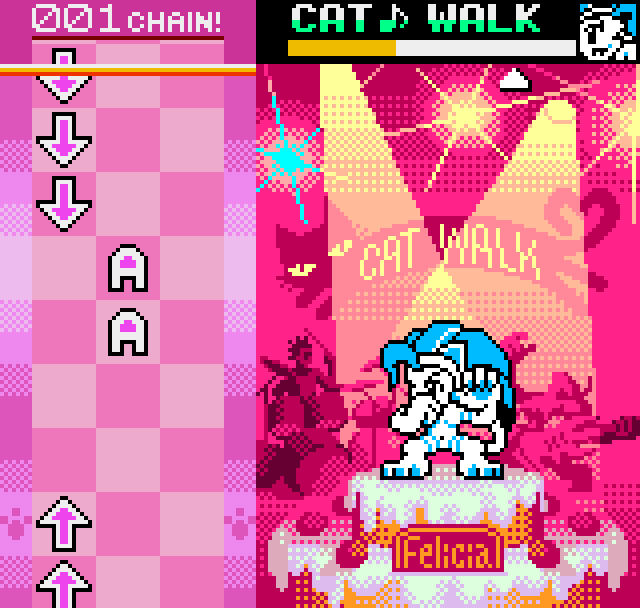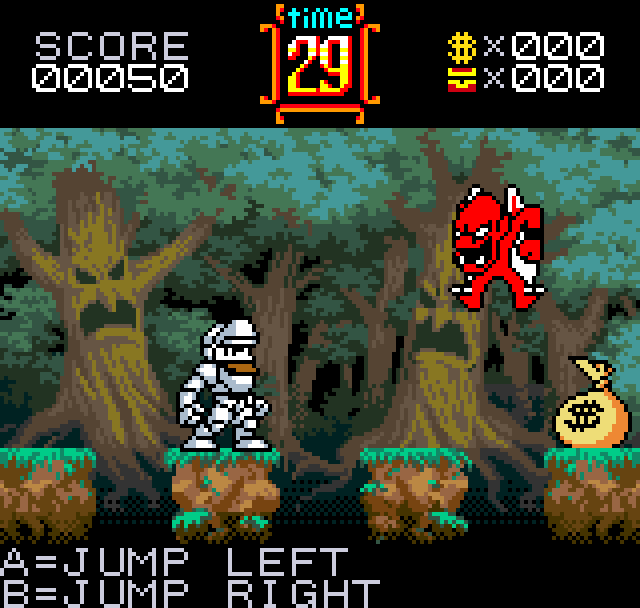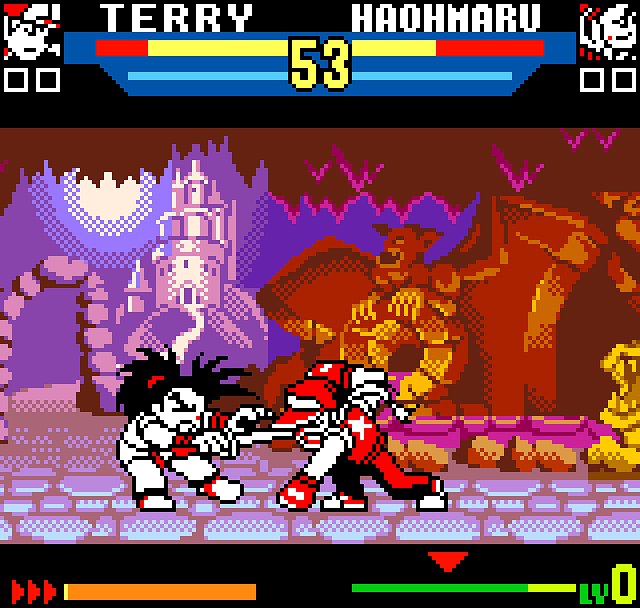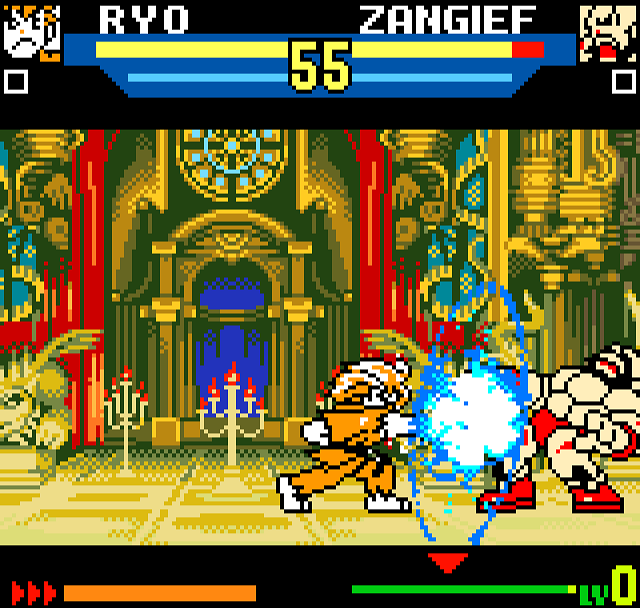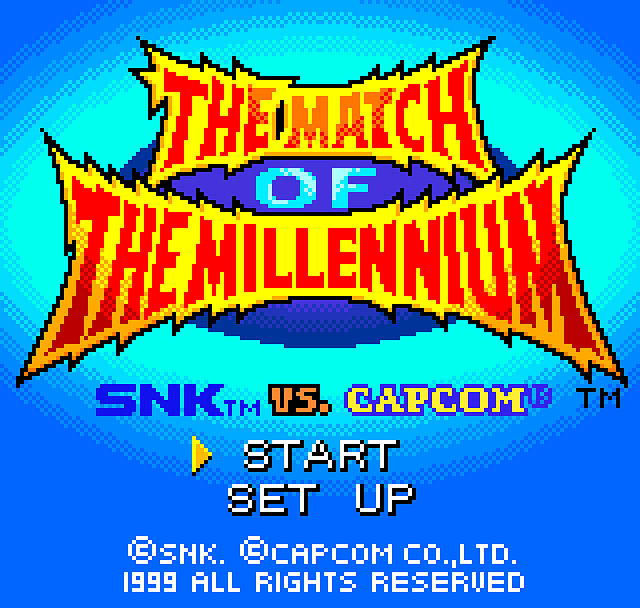SNK VS. CAPCOM: THE MATCH OF THE MILLENNIUM (NGPC)
Whilst history will likely credit 2000’s Capcom vs. SNK with popularising the rival stables fighter sub-genre, Capcom’s superb team-based brawler was technically beaten to the punch by a considerably more obscure game from SNK, just a few months earlier. Those with a Neo Geo Pocket Color were able to pit teams of legendary brawlers from both sides of the divide against one another. Finally, all those long-held hypotheticals could be settled. Who would win in scraps between Ryu and Terry, Chun-li and Mai, or Iori and Akuma?
As the nineties drew to a close and gamers could look ahead to another round of seismic technological steps, the portable fighter had become stuck in the doldrums. Whilst console owners could enjoy a multitude of arcade-quality titles in the form of Tekken, Virtua Fighter and any number of Street Fighter Alpha outings, players with handhelds were offered little solace amidst a generation of forgettable 8-bit hand-me-downs. SNK vs. Capcom: The Match of the Millennium wasn’t quite the revolution fans were perhaps craving, but it represented a significant leap in quality over its Game Boy Color rivals. It proved a fantastic effort from SNK and it was, upon release, likely the finest fighting experience you could have on the move. It represented another cool ‘n’ quirky addition to the Neo Geo Pocket Color’s library, marking a must-have for owners of the platform.
Limited sprite colour palettes give the game a unique look, where its expressive fighter animations stand out from the backdrops
This 2D crossover fighter sees an all-star selection of thoroughbred fighters spanning a range of series including Street Fighter, The King of Fighters, Samurai Shodown and Darkstalkers, with the mix proving an effective one. The game remains a superb example of how to make the most of modest hardware specs, mastering a style all of its own. It’s bolstered by an unusual artistic approach that prioritises a much smaller palette of colours for the sprites, helping distinguish well-animated fighters from more detailed backgrounds.
The stages look lovely. As well as conjuring cute reimaginings of iconic locations such as Ryu’s Japan stage made famous in Street Fighter II, there are also bustling cityscapes boldly advertising the Neo Geo Pocket Color itself, and a crashed helicopter site that brings to mind the artwork and themes of nineties SNK classics Ikari Warriors and Metal Slug. Impressively, each stage has a day and night variant, making for an interesting contrast. The action is smooth and the characters exhibit great animations, whilst most of the moves pack a punch and aren’t any less hard-hitting than its console contemporaries. Special mention must also go to the soundtrack, an excellent array of more than 50 8-bit BGMs, with the best including “Kurikinton” (Terry’s theme), the marvellously boppy “Theme of Chun-li”, the instant nostalgia hit that is “Theme of Guile” and the ultra-cool earworm “Theme of Felicia”.
The stages look lovely. As well as conjuring cute reimaginings of iconic locations such as Ryu’s Japan stage made famous in Street Fighter II, there are also bustling cityscapes boldly advertising the Neo Geo Pocket Color itself, and a crashed helicopter site that brings to mind the artwork and themes of nineties SNK classics Ikari Warriors and Metal Slug. Impressively, each stage has a day and night variant, making for an interesting contrast. The action is smooth and the characters exhibit great animations, whilst most of the moves pack a punch and aren’t any less hard-hitting than its console contemporaries. Special mention must also go to the soundtrack, an excellent array of more than 50 8-bit BGMs, with the best including “Kurikinton” (Terry’s theme), the marvellously boppy “Theme of Chun-li”, the instant nostalgia hit that is “Theme of Guile” and the ultra-cool earworm “Theme of Felicia”.
The Match of the Millennium’s combat plays to its strengths. Whilst one punch and one kick button might seem lightweight to genre purists, strong character balancing and excellent controls help build a surprisingly deep fighting experience. Move inputs retain the complexity of its arcade and console competitors and the pacing is finely-judged: bouts are fast enough not to appear a trudge, but not so fast that they descend into a button-mashing mess. There’s room for tactics, timing and a bit of thought here. SNK didn’t shirk from including what were, at the time of the game’s release, novel additions to the genre. The player can tackle the tournament with one character, or teams comprising of two or three. All the fighters come with an unlockable super-special, and there's the option to build their gauges using either Capcom or SNK methods.
Having for many years focused on arcade titles, SNK vs. Capcom marked a positive example of SNK evolving the design of their games to better accommodate long-term play. The NGPC allows players to save progress, and therefore earn points over time towards new fighters and the aforementioned super-special moves. There’s plenty to ensure The Match of the Millennium remains a regular fixture in your system. The excellent, fleshed-out Tournament (Arcade) mode is packed with character-specific cut-scenes and endings, whilst the Olympic mode, a concept they’d return to for the PlayStation version of Metal Slug X, is ideal for quick games on the go.
Having for many years focused on arcade titles, SNK vs. Capcom marked a positive example of SNK evolving the design of their games to better accommodate long-term play. The NGPC allows players to save progress, and therefore earn points over time towards new fighters and the aforementioned super-special moves. There’s plenty to ensure The Match of the Millennium remains a regular fixture in your system. The excellent, fleshed-out Tournament (Arcade) mode is packed with character-specific cut-scenes and endings, whilst the Olympic mode, a concept they’d return to for the PlayStation version of Metal Slug X, is ideal for quick games on the go.
SNK vs. Capcom's mini-games are a major highlight, referencing a range of games from the companies back catalogues
Here, the player can enjoy a selection of simple but fun fight variants (quickly dispatching opponents, first-hit wins, survival etc) but there’s also creativity and ambition to its endearing mini-games. The Capcom-themed trials, in particular, are fantastic. These include a Dance Dance Revolution homage starring Felicia, as the player tackles rhythm games for six different songs, each ramping up the difficulty as they demand more button presses at higher tempos. There’s an ultra-simple but surprisingly addictive platform-hopping game featuring Arthur from Ghosts ‘n Goblins, perfect for hooking the player in to trying to better high scores. There is also a reasonable pairing of SNK pursuits that test the player’s gallery shooter skills in a Metal Slug-themed alien ship shooter and a grid-based swordplay game starring Haohmaru.
With high scores to beat and medals to earn in the moreish Olympic mode, endings to see (with the occasional hilarious translation) in the Tournament and general, quick-fire fun to be had from on-the-go bouts either against the AI or a friend, longevity is well catered for. SNK overcomes with aplomb a lot of the limitations its hardware might have presented: the lack of buttons is mostly covered by the game’s commendable depth and pacing, and whilst the roster isn’t enormous, the brawlers present make for an excellent mix. Even the visuals, entirely distinct from any previous 2D fighter, must be considered a triumph of artistic direction. This first combat mash-up between SNK and Capcom can be considered a match made in heaven.
